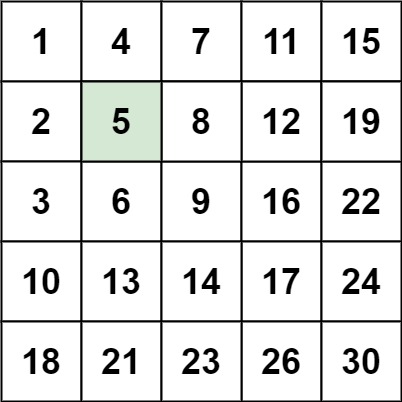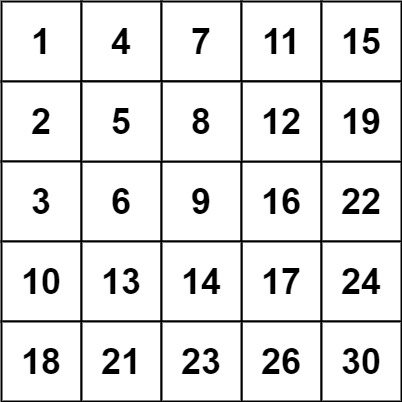Write an efficient algorithm that searches for a
- Integers in each row are sorted in ascending from left to right.
- Integers in each column are sorted in ascending from top to bottom.
Example 1:

Input: matrix = [[1,4,7,11,15],[2,5,8,12,19],[3,6,9,16,22],[10,13,14,17,24],[18,21,23,26,30]], target = 5 Output: true
Example 2:

Input: matrix = [[1,4,7,11,15],[2,5,8,12,19],[3,6,9,16,22],[10,13,14,17,24],[18,21,23,26,30]], target = 20 Output: false
Constraints:
m == matrix.length n == matrix[i].length 1 <= n, m <= 300 -109 <= matrix[i][j] <= 109 - All the integers in each row are sorted in ascending order.
- All the integers in each column are sorted in ascending order.
-109 <= target <= 109
Solution
差別在於,沒有保證下一行的數字都比上一行大
所以對row和col做binary search 的方法會不行
但單純就row和col本身來看,數值都還是sorted的
所以右上角往左往下,都會是遞減
或者左下角往上往右,都會是遞增
可以從這兩個地方出發來找值,這次選用右上角
如果 target 比目前的值大,到下移動
如果 target 比目前的小,往左移動
kotlin
沒有留言:
張貼留言